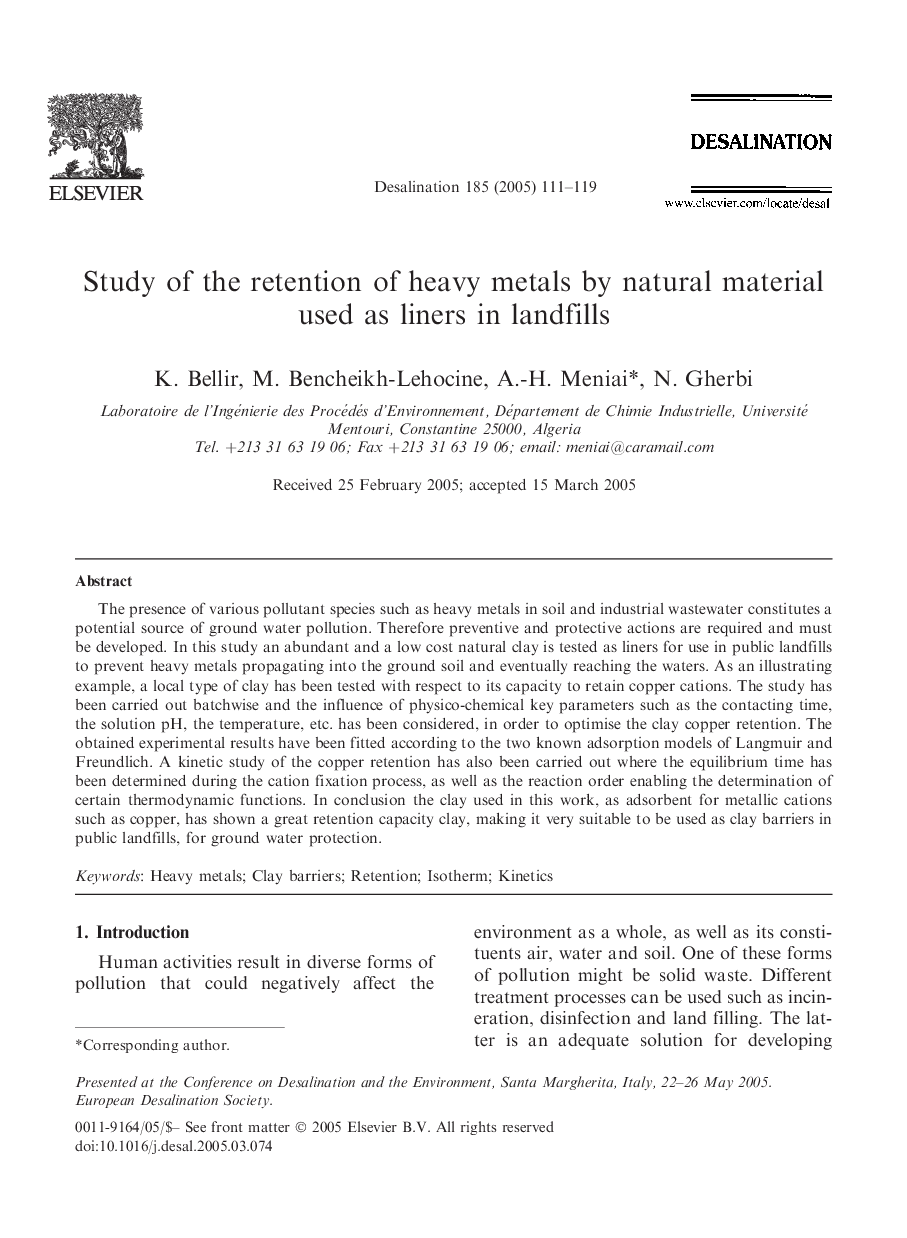| Article ID | Journal | Published Year | Pages | File Type |
|---|---|---|---|---|
| 9680806 | Desalination | 2005 | 9 Pages |
Abstract
The presence of various pollutant species such as heavy metals in soil and industrial wastewater constitutes a potential source of ground water pollution. Therefore preventive and protective actions are required and must be developed. In this study an abundant and a low cost natural clay is tested as liners for use in public landfills to prevent heavy metals propagating into the ground soil and eventually reaching the waters. As an illustrating example, a local type of clay has been tested with respect to its capacity to retain copper cations. The study has been carried out batchwise and the influence of physico-chemical key parameters such as the contacting time, the solution pH, the temperature, etc. has been considered, in order to optimise the clay copper retention. The obtained experimental results have been fitted according to the two known adsorption models of Langmuir and Freundlich. A kinetic study of the copper retention has also been carried out where the equilibrium time has been determined during the cation fixation process, as well as the reaction order enabling the determination of certain thermodynamic functions. In conclusion the clay used in this work, as adsorbent for metallic cations such as copper, has shown a great retention capacity clay, making it very suitable to be used as clay barriers in public landfills, for ground water protection.
Related Topics
Physical Sciences and Engineering
Chemical Engineering
Filtration and Separation
Authors
K. Bellir, M. Bencheikh-Lehocine, A.-H. Meniai, N. Gherbi,
